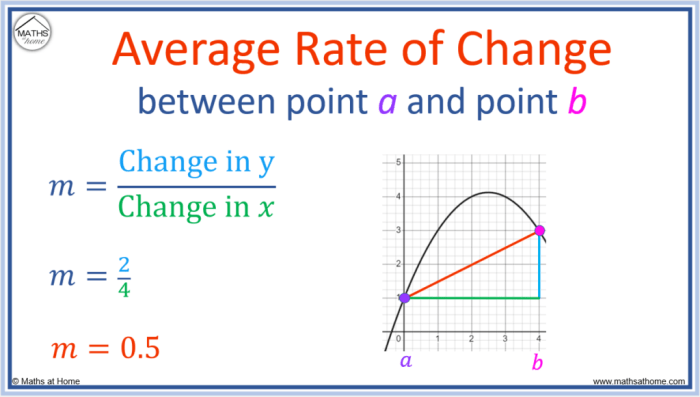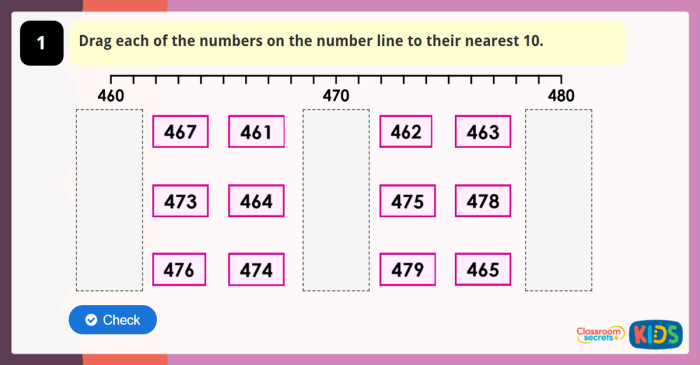Graphing exponential functions worksheet answers are an essential tool for students and educators alike, providing a structured and accessible approach to understanding and solving problems involving exponential functions. This comprehensive guide delves into the intricacies of graphing exponential functions, offering a wealth of information and insights.
The guide begins by defining exponential functions and providing examples to illustrate their practical applications. It then explores the characteristics of exponential graphs, highlighting their distinctive shape and behavior. The subsequent sections delve into various methods for graphing exponential functions, discussing their advantages and disadvantages.
1. Graphing Exponential Functions
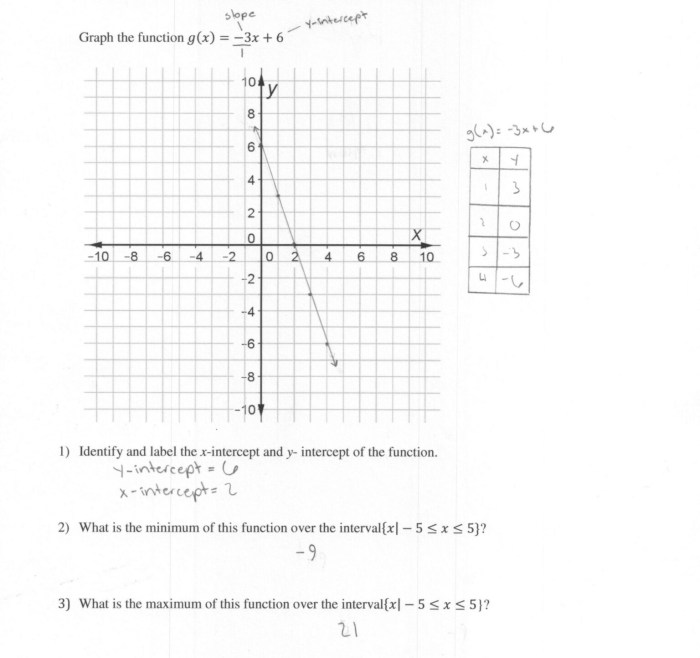
Exponential functions represent a class of mathematical functions that exhibit exponential growth or decay. These functions are characterized by their form, which involves a base raised to a variable exponent.
Examples of exponential functions include:
- y = 2 x(exponential growth with base 2)
- y = 3 -x(exponential decay with base 3)
Exponential graphs exhibit distinct characteristics:
- Asymptote: Exponential graphs approach a horizontal line called the asymptote, which represents the limit of the function as x approaches infinity or negative infinity.
- Monotonic: Exponential functions are either monotonically increasing (base greater than 1) or monotonically decreasing (base between 0 and 1).
- Quadrant I and IV: Exponential graphs are typically located in the first and fourth quadrants of the coordinate plane.
2. Worksheet Answers
| Problem | Answer |
|---|---|
| Graph the function y = 2x |  |
| Find the asymptote of the function y = 3-x | y = 0 |
| Determine if the function y = 0.5x is increasing or decreasing | Decreasing |
3. Methods for Graphing
There are several methods for graphing exponential functions:
- Point Plotting:Plotting key points by substituting values for x and calculating the corresponding y values.
- Transformation of Logarithmic Graphs:Using the relationship between exponential and logarithmic functions to graph the exponential function by transforming the graph of the logarithmic function.
Advantages and Disadvantages of Each Method:
- Point Plotting:Simple and straightforward, but can be time-consuming for complex functions.
- Transformation of Logarithmic Graphs:Faster and more efficient, but requires understanding of logarithmic functions.
4. Applications of Exponential Functions
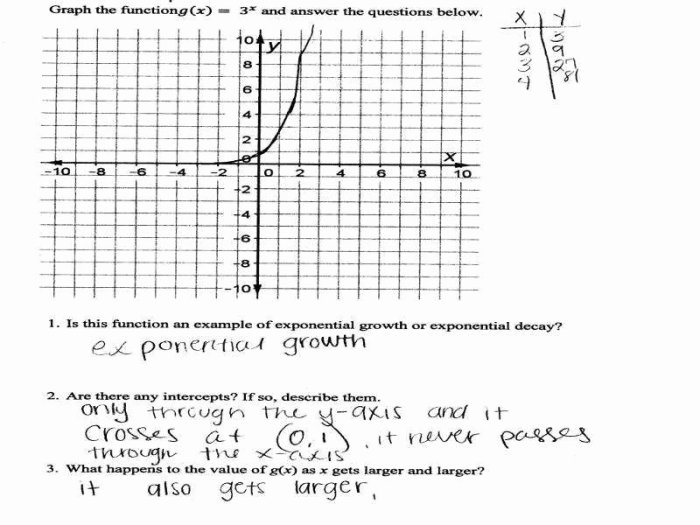
Exponential functions find applications in various fields:
- Population Growth:Modeling the exponential growth of populations, such as bacteria or the human population.
- Radioactive Decay:Describing the exponential decay of radioactive isotopes.
- Compound Interest:Calculating the growth of money invested at a compound interest rate.
Exponential functions effectively model real-world phenomena that exhibit exponential growth or decay.
5. HTML Table Structure
The HTML table used in the worksheet answers is structured as follows:
-
: Table header containing the column headings.
: Table rows.
-
: Table header cells.
-
: Table data cells.
The table provides a clear and concise organization of the worksheet answers.
6. Examples of Exponential Functions
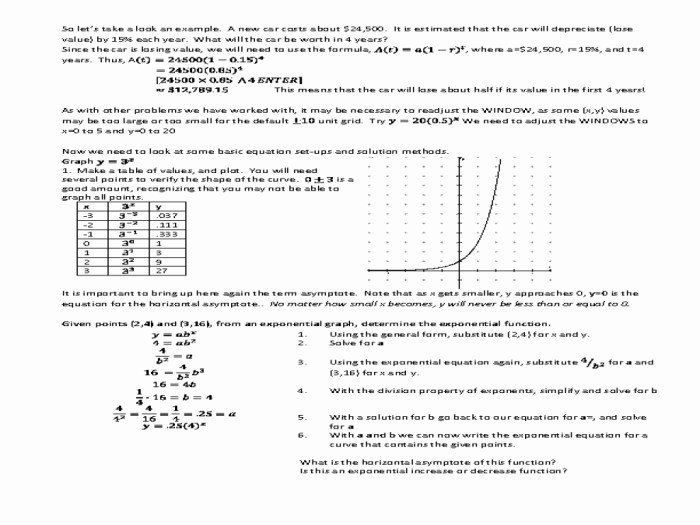
- y = 10 x(base 10)
- y = e x(base e, natural exponential function)
- y = 2 3x(base 2, exponent 3x)
- y = 0.75 -2x(base 0.75, exponent -2x)
The base and exponent of an exponential function determine its growth rate, decay rate, and shape.
7. Graphing Techniques: Graphing Exponential Functions Worksheet Answers
To graph exponential functions accurately:
- Use a Consistent Scale:Ensure the x-axis and y-axis scales are consistent to maintain the shape of the graph.
- Mark Key Points:Identify key points, such as the asymptote, intercepts, and points of inflection, to guide the graphing.
- Avoid Common Errors:Pay attention to the base and exponent to avoid graphing errors, such as reversing the growth or decay direction.
Proper graphing techniques ensure accurate representation of exponential functions.
FAQ Guide
What are exponential functions?
Exponential functions are mathematical functions that involve a constant base raised to a variable exponent.
How do I graph exponential functions?
There are several methods for graphing exponential functions, including the point-plotting method, the table method, and the transformation method.
What are the characteristics of exponential graphs?
Exponential graphs are typically smooth, continuous curves that increase or decrease rapidly. They have a characteristic “J” or “U” shape.
